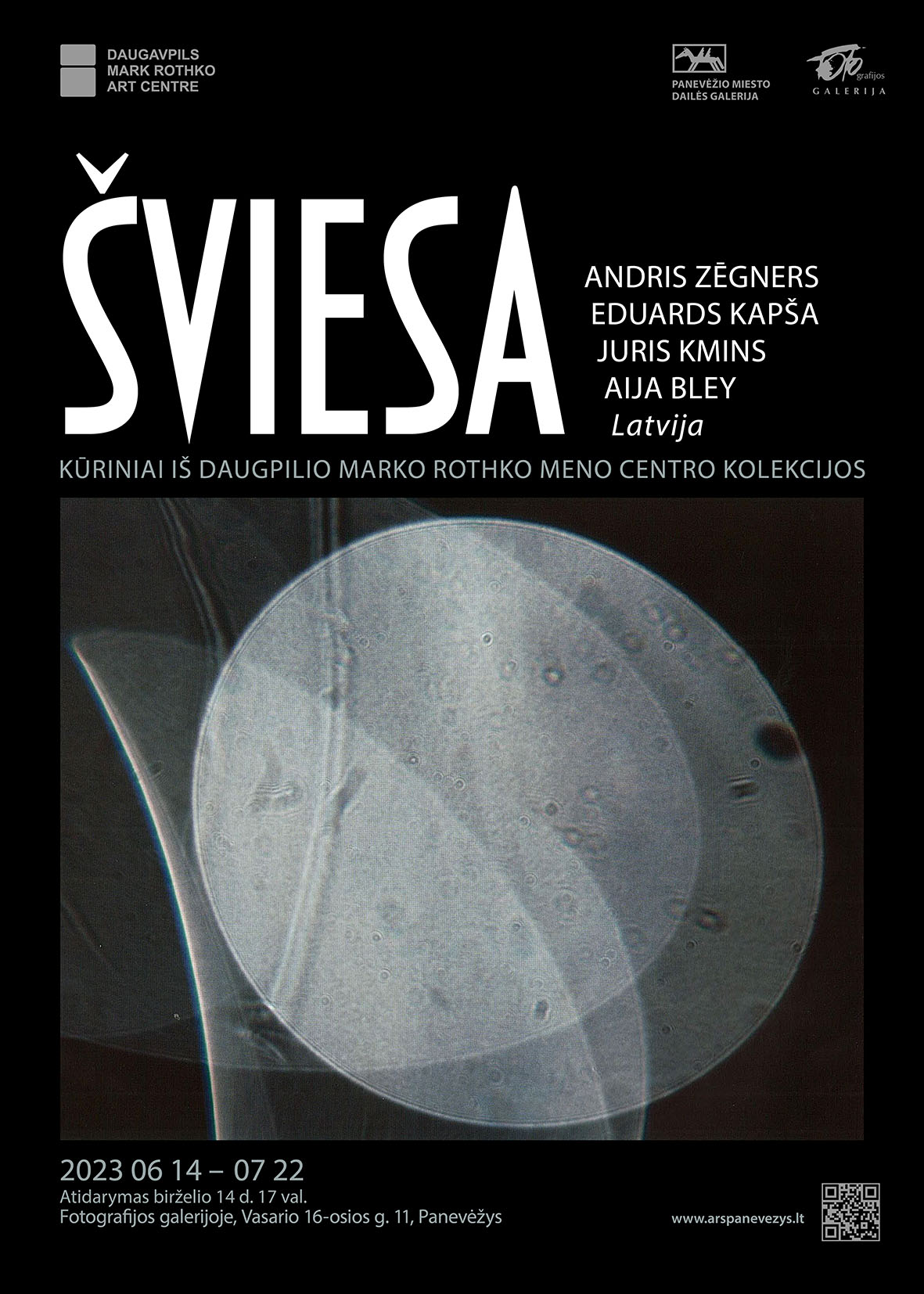June 14 – July 22, 2023
Exhibited at Photography Gallery (Vasario 16-osios str. 11, Panevėžys)
Selected works from the Daugavpils Mark Rothko Art Centre collection
The word ‘photography’ comes from Greek and stands for “drawing with light”. Rays of light reflected from an illuminated object pass through a camera lens and are exposed onto a photographic material to produce an invisible (latent) picture on its light-sensitive surface.
At any point in the space-time continuum, light has always inspired endless inquiry in science and art. Physicists continue to debate the true nature of light: sometimes it is made of waves, sometimes – particles. One way or another, light is the building block of the universe. Ancient cultures worldwide have attributed light distinctly mystical meanings, and the modern world feels increasingly starved for light in the broadest sense of the term – starved for the light we may find around us and the light that comes from within.
The exhibition features original works by four Latvian artists from the Daugavpils Mark Rothko Art Centre collection. The concept is black-and-white photography, celebrated for its capacity to capture the interplay of light and shadow with the most striking precision.
The Daugavpils Mark Rothko Art Centre collection dates back to the idea of the institution’s establishment. It keeps growing from year to year with targeted purchases, symposium outputs and valuable donations from individual artists and institutional partners as a testament to existing and prospective cooperation projects in visual arts. As of now, the collection has swelled to more than three thousand artworks in different mediums. The Rothko Centre is committed to its preservation and public display on the centre’s premises and beyond in domestic and international venues.
Andris Zēgners is one of the most remarkable Latvian photographers of his generation. His creative interests revolve around the textures and structures of various objects and natural elements – their exploration and creative transformation. Consistent effort in large-scale analogue or film photography enables Zēgners to capture extraordinary spatial and formal relationships, rich in striking conceptual associations. The artist aspires to discover a whole new world concealed in seemingly unremarkable, familiar environments.
Photographer Eduards Kapša is a true master of motion photography, blessed with a keen and perceptive eye and a generous heart that gladly shares the frozen moment with the viewer. To quote the artist: “I photograph creators, and I work on an equal footing with my models, aiming for freedom of expression and giving them space to build a character and step into its shoes. When my model works in front of a camera – leaps, jumps or exercises, and forgets the photographer is even there – that is my moment because that’s when the person is true and unaffected. Motion photography is also an intricate technical process. The model can’t simply fake it or strike a pose for the camera.”
A construction engineer by profession, Juris Kmins took up photography when he realised that visual materials give much better ways of expression than verbal means ever could. According to Kmins, man-made photography remains an essential visual medium due to its ability to evoke strong emotional reactions. The artist has produced several remarkable series, including portraits depicting people of different ages and social backgrounds, as well as works that focus on architectural forms and eye-catching elements in the urban landscape.
Aija Bley (Cimiņa) is a multidisciplinary artist and filmmaker who creates within and across video, photography, printmaking, spatial object and performance mediums. Her creative interests focus on time, perception and visualisation towards artistic transformations of documentary reality into conceptual installations. “On the Road” is a series of photography-based silkscreen works displayed in lightboxes to achieve the illusion of depth and motion.


